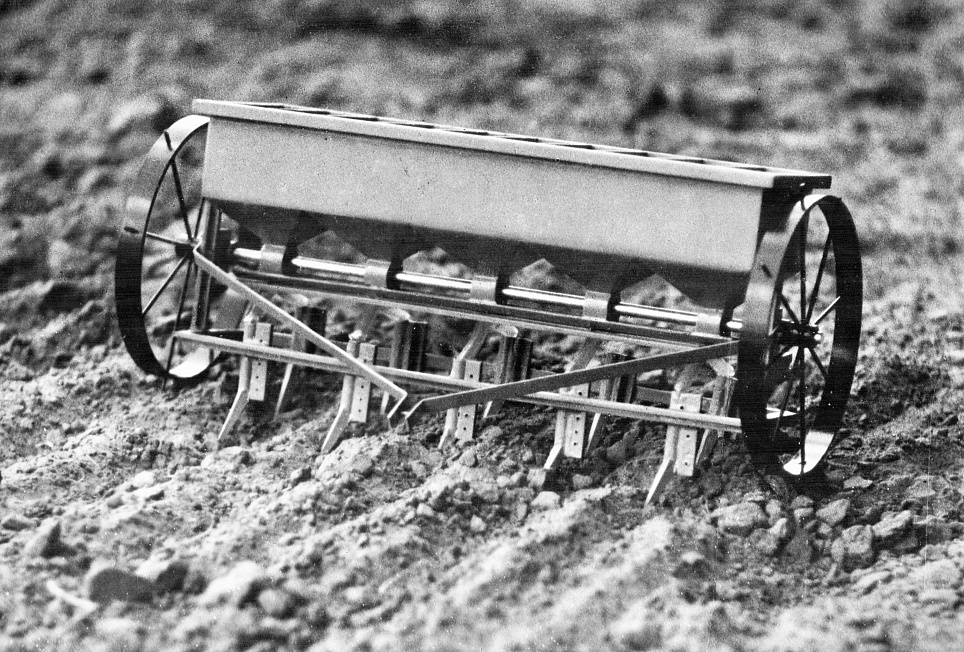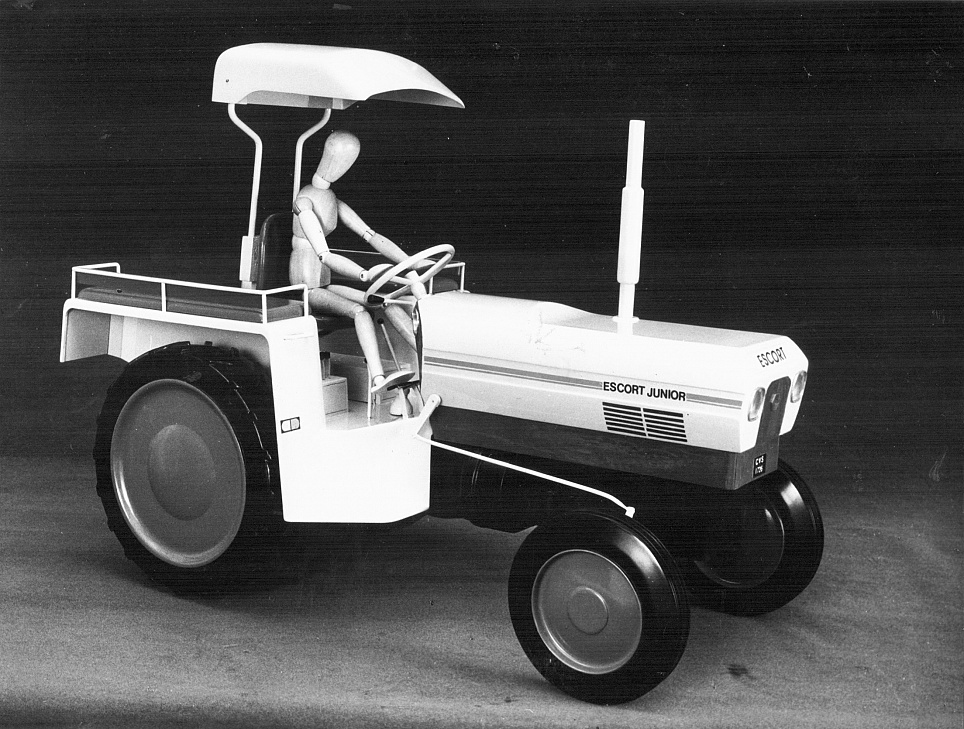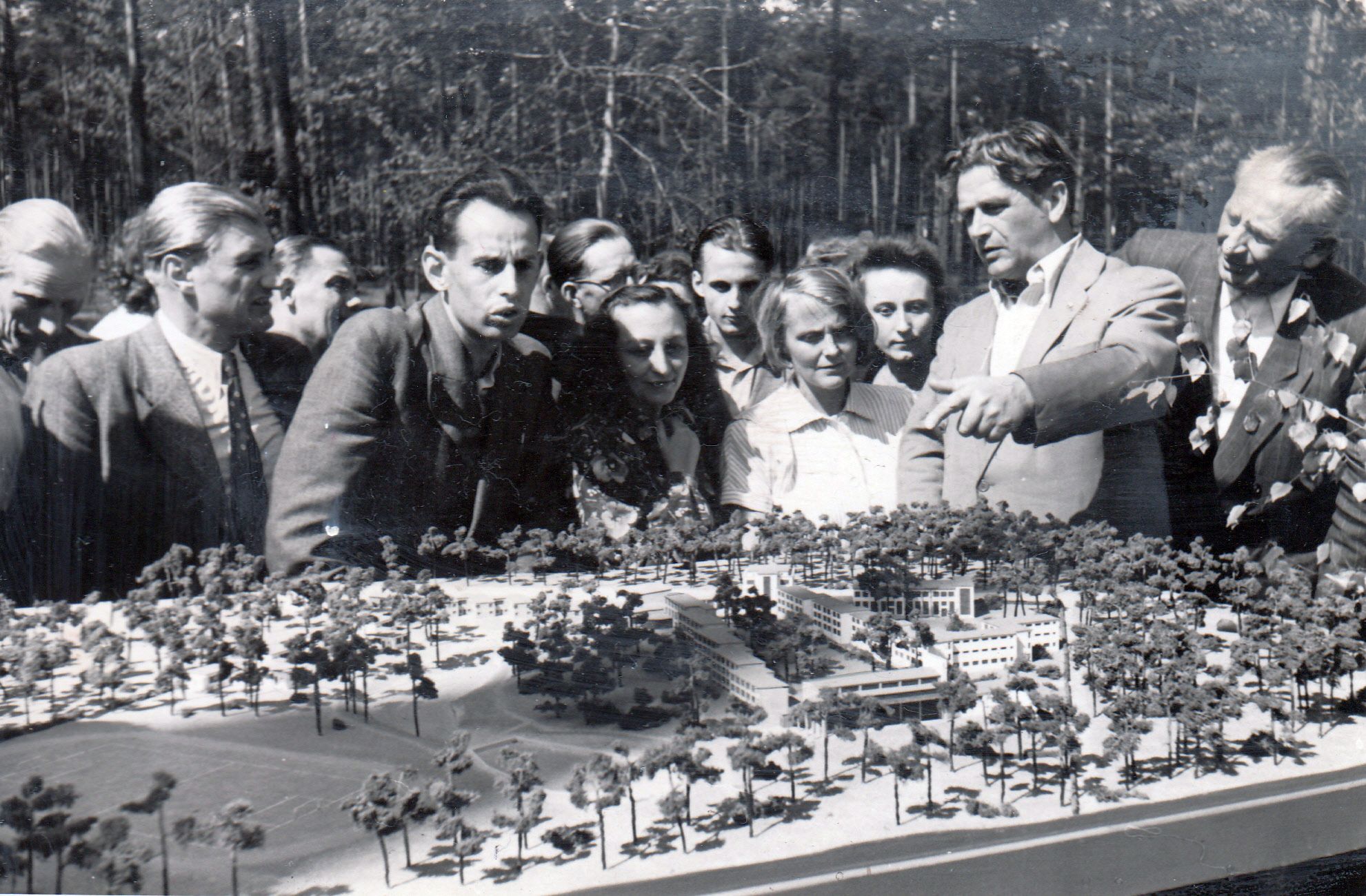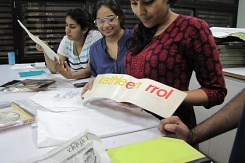Bauhaus and the Origin of Design Education in India

Research project major, undertaken at RCA, London, Private Archive of S. Balaram.

Institutional service - LPG stove design for Indian oil corporation, Private Archive of S. Balaram.
Just as the Bauhaus was situated first in Weimar, then in Dessau and finally in Berlin, the NID was located first in the capital Delhi before being moved to Ahmedabad to be away from political interference. Notably, the institute was under the Ministry of Industry and Commerce rather than under the Ministry of Education, because design was seen as an essential service to the industrial development of India.
NID commenced afresh on a clean slate by examining the very basics not only of design education but the concept of education itself, with such questions as:
- Can a person be educated?
- Can design be taught?
- How is design relevant to the India of today and the India of tomorrow?
- How is design different from craft?
These were the building blocks on which NID’s philosophy, ethos, teaching methodology and curriculum were developed. The NID building itself was conceived as an innovative modular brick dome building.

Institutional service - Oxygenator design for Sri Chitra Tirunal Institute of Medical Sciences and Technology, Private Archive of S. Balaram.
In its formation the institute laid down two fundamental rules:
- To be quite different from any methods followed by reputed design schools abroad, thus rejecting the transplantation of alien ideas.
- To be substantially out of the way of Indian universities, thus rejecting the tendency towards tunnel vision that can exist in universities.
After examining many great design pedagogies around the world, especially that of the Bauhaus, even before courses commenced three methods were evolved and implemented. These constituted a departure from learning methods existing anywhere else:
- Workshops to be central to education where regular batch production would go on for students to understand the scope and limitations of production.
- In-house service through the institution undertaking real-life projects where students would have the opportunity to learn as apprentices.
- Research and documentation of Indian traditions where students assimilate national identity.
Even today no other Indian design school is able to emulate these principles.
Pedagogic Principles
The curriculum was flexible and changes were made continually as the school developed. An important addition was a science and liberal arts program, in order to integrate the humanities into the inculcation of professional design skills, thus forming a strong humanistic basis for design, meaning a system where human interests and the mind of man is paramount. Before the NID, liberal arts had no place in education related to applied sciences such as engineering In India— Rabindranath Tagore's Viswabharati (1919) being the only exception. The NID invited Christopher Cornford, a British humanist and great-grandson of Charles Darwin to help in devising the Science and Liberal Arts (SLA) module for the curriculum.
- A “seed-farm” concept was adopted by admitting only a small, manageable student body. The teacher-student ratio did not exceed 1:15 to facilitate personal attention to individual student and to avoid impersonal mass production of graduates.
- Indians have reinterpreted the “learning by doing” principle of the Bauhaus as “learning to know and learning to do” in order to allow learning of the design process, which invariably commences with coming to know and understand the problem a design is meant to solve.
- While at the Bauhaus teachers were called “masters,” the NID viewed teachers as guides and facilitators, and were called “faculty” rather than lecturers or professors, as in the university system.

Student group project in Industrial Design for Agriculture, Private Archive of S. Balaram.

Research project minor, undertaken at Royal college of Art, London when NID deputed the author on Ford Foundation grant, Private Archive of S. Balaram.
- A continuous open-book qualitative evaluation system replaced the existing system of examinations and marks. The jury method of evaluation had the added benefit of preparing student for client presentations.
- Instead of transplanting the academic culture and curriculum of foreign universities, design educators of international repute were invited to the school and young faculty from India were sent to great design institutions abroad, to be exposed to ideas that might be made relevant to the Indian context. The presence of eminent global designers benefitted both the school and Ahmedabad’s municipal management, as well as the city as a whole, through the institute’s hosting public lectures. World-renowned designers, architects and other cultural practitioners—including Charles Eames, Adrian Frutiger, Armin Hoffman, Cartier-Bresson, John Cage, Frei Otto, Louis Kahn and many others—visited and worked at NID.
- HfG Ulm played a major role in the early growth of NID. Its chief strength, the foundation program, was formulated by Hans Gugelot of Ulm and Kumar Vyas of NID. With his teaching experience in developing countries, Gui Bonsiepe, another Ulm teacher, had many interactions with the school as a consultant, and his influence was of special significance to Indian design education.
Academic Culture
The NID curriculum plan emphasized a foundation program of a year and a half duration, followed by four years of project-based learning which culminated in a comprehensive diploma project. As a pluralist nation, India required design training not in different specializations but, rather, of a broad, generalist, multi-disciplinary nature. Considering socio-cultural and developmental factors in India, the following unique innovations in the education system were made by the NID’s early educators:
- To counter the prevailing “rote-routine-remember” system of Indian education, unlearning at the design institute was considered crucial.
- As most design students come from urban backgrounds while the majority of the Indian population live in villages, an experiential course called “Rural Exposure” was introduced, which involved students living in villages.
- India is an agricultural country. Its economy also possesses a vast small-scale craft sector. The NID therefore supported both agriculture and craft production by encouraging students to do related projects.
- Craft is a living tradition in India practiced by millions of people. But these traditions are threatened by modern mass production. From the very beginning craft documentation and research on indigenous materials and methods was considered important, especially for creating an identity for Indian design.
- Multi-disciplinary projects where faculty, students and technical staff can rub shoulders and take on different roles were undertaken in order for students to acquire essential team-working abilities.
- Open elective courses conducted by external professionals who took on experimental themes were introduced for cross disciplinary learning.
- Constant experimentation was the motto and an exposure to experimental work happening all over the world in the field of art and technology was mandatory.

Institutional service - Small tractor designed for indian conditions for Eicher, Private Archive of S. Balaram.
Pilot Batch Education Program

Early NID Student exercise in Form studies, Private Archive of S. Balaram.
The project examples below illustrate the innovative moorings of Indian design in its search for nationalism:
- Basic education in aesthetics was based on the modernist principles of abstraction, following the Bauhaus mode. This example reveals exploration of geometric forms in three dimensions.
- To be relevant to an agricultural country, students were given a group project of designing a seed plantation device where form and function are well integrated.
- A strong cultural habit of Indian people is to scrape one’s tongue every day. The toothbrush-tongue cleaner was worked out as a design addressing that particularly Indian habit.
- A personal vehicle for India’s economy and the need of the masses is the bicycle. The design presented here, the end result of a major research project, was suitable for small industry production.
- There was a world-wide fuel crisis in the seventies and a tremendous need to save fuel. A wick stove had been designed which could save 50 per cent of fuel and yet was still affordable to the common man.
- Modern India needs mechanization of agriculture, but most farmers possess only small-scale land holdings. A small tractor marketed at an affordable price was designed to aid these farmers. It incorporates the modern design principles of functionality, ergonomics and aesthetics.
- Until the 1980s India was importing life-saving medical equipment such as the oxygenators used in open-heart surgery. An indigenous design was created suitable to India’s small-scale batch-production. The device was multi-functional, and could be used as a cardiotomy reservoir and paediatric oxygenator. It was a substitute for imports and made the nation self-sufficient in this regard. This product was a first of its kind in the world.
- Among the urban middle class, liquefied petroleum gas (LPG) is the most common fuel as it does not produce smoke and provides clean energy. This gas stove design saved 30 per cent on fuel and was also suitable for production by small-scale industries, with the help of government aid.
Development Ahead
The problems of the developing countries/the majority world are totally different and require appropriate solutions. The Indian reality, juxtaposed to Bauhaus is its enormous population where one finds a diversity of languages, cultures, behaviors. What this diverse population has in common is that the majority live in villages which lack infrastructure.
At the NID’s inception, one major question posed was this: why would a poor country with millions of starving people need design? Four decades later the question is still valid. The rich became richer, the poor became poorer and design did not reach villages where it was needed most.
Decades ago, the author suggested India had a need for a “barefoot designer,” taking a cue from the phenomenal success of China’s barefoot doctor movement. The concept involved residents of Indian villages selecting a suitable member of the community who would be sent to a design school in the city, undergoing a short, tailor-made program relevant to the particular needs of the village in question. On return, this person would train a dozen others from adjacent villages, thus causing a multiplier effect. Design competency would be applied to their most urgent needs, which they understand best. Optimistically, this would cause a rural design revolution.
Experiments were undertaken in this direction by a few Indian designers: for instance, the Rural University project in Jawaja, where the NID adopted a village. However, such cases are rare because for designers to stay in a village without pay is a sacrifice. Online learning is not possible in villages due to lack of electricity, literacy and internet connectivity.
Equality by design is a democratic necessity whose scale is proportional to population density. India thus tops the list, having the largest number of physically, mentally and socio-economically challenged people. Universality is not uniformity and the universal design principles of America cannot be applied in India because of the differences in socio-cultural contexts. A wheelchair, for example, is of no use in India’s rural areas due to a basic cultural/physical non-compatibility. In 2011, an Indian design group developed Universal Design India Principles. Yet, in almost all of the design schools in India, universal design has not entered the curriculum.
Bauhaus principles continue to guide Indian design education in spirit, with the proviso that its application ought to be appropriate to the social, economic, cultural and political realities of the nation.

Institutional service – Wickstove design for Government of India, Private Archive of S. Balaram.
































.jpg?w=245&h=163&c=1)

.jpg?w=245&h=163&c=1)








